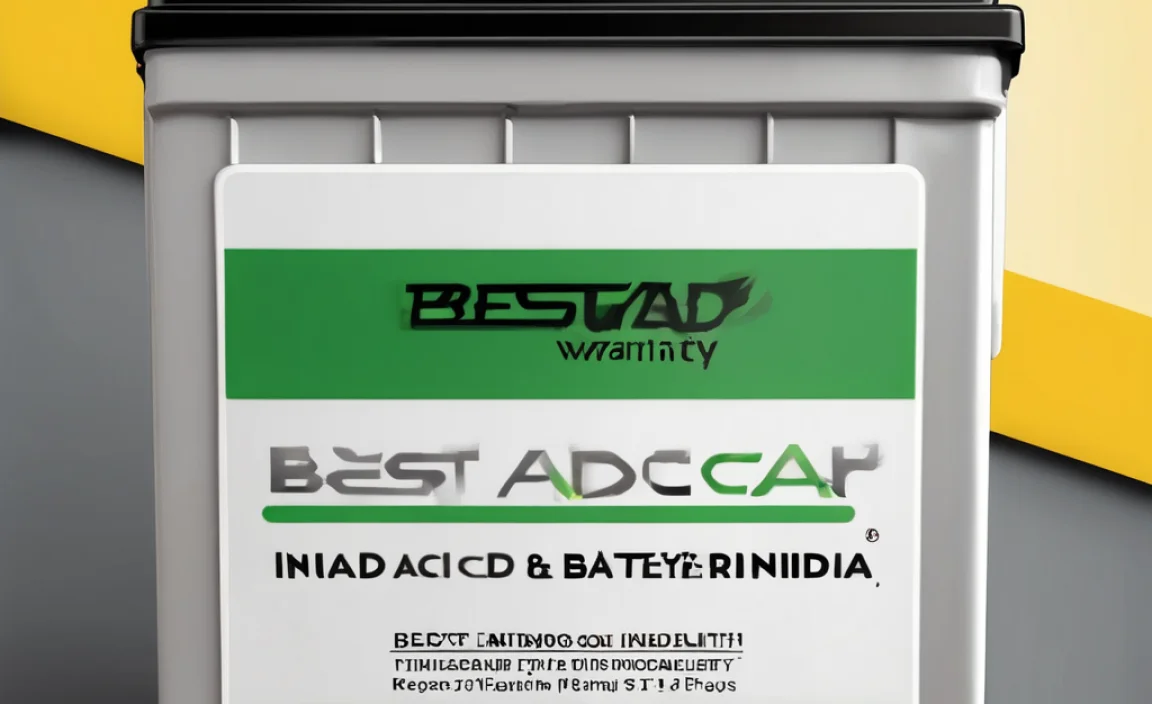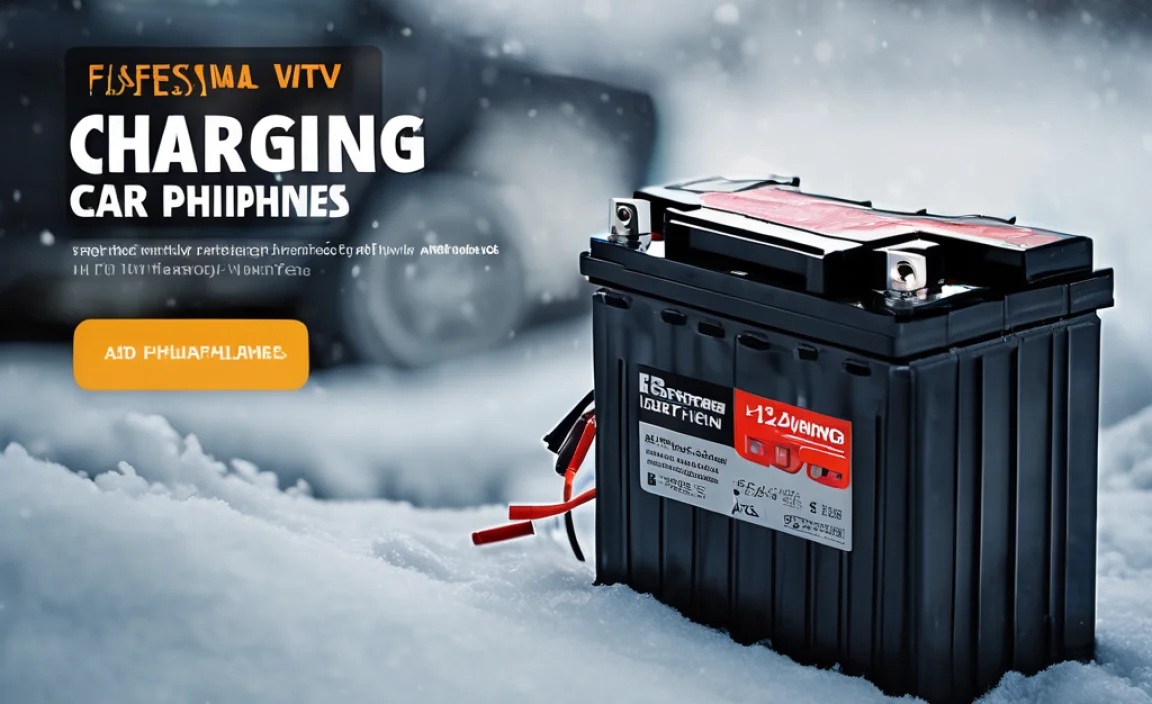Choosing the right batteries for fish finders is a critical decision that can significantly impact your fishing trips. A reliable power source ensures your fish finder operates optimally, providing accurate depth readings, structure detection, and ultimately, helping you locate those elusive fish. Without the proper battery, your sophisticated sonar technology becomes nothing more than a paperweight. This guide will delve into the crucial aspects of selecting the best and most affordable batteries for your fish finder, ensuring you get the most out of your investment and spend less time worrying about power and more time reeling in your catch.
Understanding Fish Finder Battery Technologies
The world of fish finder batteries offers several options, each with its unique advantages and disadvantages. Primarily, you’ll encounter two main types: sealed lead-acid (SLA) batteries and lithium-ion (Li-ion) batteries.
Sealed Lead-Acid (SLA) Batteries
SLA batteries have been the long-standing standard for fish finder power. They are generally more affordable upfront, making them an attractive option for budget-conscious anglers. They come in various capacities (measured in Amp-hours or Ah) and physical sizes, so it’s essential to match the battery to your fish finder’s power requirements and the available space on your boat or kayak.
Pros:
Affordability: Typically the cheapest option, especially for initial purchase.
Availability: Widely available at most electronics and marine supply stores.
Durability: Generally robust and can withstand some rough handling.
Cons:
Weight: Significantly heavier than lithium-ion batteries, which can be a concern for kayak anglers or those with limited carrying capacity.
Lifespan: Have a shorter lifespan compared to lithium-ion batteries, meaning you’ll need to replace them more frequently.
Charging Time: Slower charging times compared to lithium-ion.
Maintenance: While “sealed,” some can benefit from occasional checks and proper charging methods to extend their life.
Depth of Discharge (DoD): Repeatedly discharging them too deeply can significantly shorten their lifespan.
Lithium-Ion (Li-ion) Batteries
Lithium-ion technology has revolutionized portable power, and fish finder batteries are no exception. While the upfront cost is higher, the long-term benefits often outweigh the initial investment. Li-ion batteries are lighter, offer more power density, and have a much longer lifespan.
Pros:
Lightweight: Significantly lighter than SLA batteries, making them ideal for portable setups and minimizing overall weight on your vessel.
Long Lifespan: Can be recharged many more times than SLA batteries, leading to lower long-term costs.
Consistent Power Output: Provide a more stable voltage throughout their discharge cycle, ensuring your fish finder performs consistently.
Faster Charging: Generally charge much faster than SLA batteries.
High Depth of Discharge (DoD): Can be discharged more deeply without significantly degrading their lifespan.
Maintenance-Free: Typically require no user maintenance.
Cons:
Higher Upfront Cost: The initial purchase price is considerably more than SLA batteries.
Specific Chargers: May require a specific charger designed for lithium-ion chemistry.
Key Factors When Buying Batteries for Fish Finders
When selecting batteries for fish finders, there are several critical factors to consider beyond just the type of battery.
Amp-Hours (Ah) and Runtime
The Amp-hour (Ah) rating of a battery indicates its capacity – essentially, how much energy it can store. A higher Ah rating means longer runtime. To determine the appropriate Ah for your needs, consider:
Fish finder power consumption: Check your fish finder’s manual for its typical wattage or current draw.
Trip duration: How long do you typically spend on the water without access to charging?
Planned usage: Will you be running the fish finder constantly, or only for shorter periods?
A general rule of thumb is to multiply your fish finder’s average current draw (in Amps) by your longest anticipated fishing session (in hours) to get a minimum Ah requirement. It’s always wise to have a bit of extra capacity to avoid running out of power unexpectedly.
Physical Size and Weight
As mentioned earlier, the physical dimensions and weight of the battery are crucial, especially for kayak anglers or those with limited space on a smaller boat. SLA batteries can be quite bulky and heavy. Lithium-ion batteries, while more expensive, offer a significant advantage in this regard. Ensure the battery will fit securely in your battery box or mounting location.
Voltage Compatibility
Most fish finders operate on a 12-volt (V) system. It’s absolutely essential to match the battery’s voltage to your fish finder’s requirements. Using a battery with the wrong voltage can damage your fish finder beyond repair. Always verify the voltage specified in your fish finder’s manual.
Internal Resistance
A battery’s internal resistance affects its ability to deliver current, especially under heavy load. Batteries with lower internal resistance can deliver more power more efficiently, leading to better performance, particularly in colder temperatures. While not always explicitly advertised, higher-quality batteries generally have lower internal resistance.
Brand Reputation and Reviews
When purchasing batteries for fish finders, opting for reputable brands can provide peace of mind. Look for brands known for quality in marine electronics or battery technology. Reading online reviews from other anglers can offer valuable insights into a battery’s real-world performance, reliability, and customer satisfaction.
Finding Affordable Options Without Compromising Quality
The “best and affordable” balance is achievable with careful research and consideration.
For the Budget-Conscious:
If your budget is tight, a good quality SLA battery might be your best bet. Look for reputable SLA battery manufacturers and aim for a capacity that comfortably exceeds your estimated needs. Consider purchasing from marine supply stores or reputable online retailers that offer competitive pricing. Remember to factor in the cost and frequency of replacement.
The Long-Term Value Proposition:
While the initial cost of lithium-ion batteries is higher, their extended lifespan, lighter weight, and superior performance often make them the more economical choice in the long run. You’ll avoid the recurring costs of replacing SLA batteries every few seasons and enjoy a more consistent and reliable power source on the water. Many newer Li-ion batteries are now available at more accessible price points than they were even a few years ago, especially if you opt for models specifically designed for deep-cycle applications.
Sales and Promotions:
Keep an eye out for seasonal sales, holiday promotions, and clearance events at marine electronics stores and online retailers. Purchasing during these times can significantly reduce the cost of both SLA and lithium-ion batteries.
Maintenance and Charging Tips for Longevity
Regardless of the battery type you choose, proper maintenance and charging are key to maximizing its lifespan and ensuring reliable performance.
Use the Correct Charger: Always use a charger specifically designed for your battery type (SLA or Li-ion) and chemistry. Using the wrong charger can damage the battery and be a safety hazard.
Avoid Deep Discharge (SLA): For SLA batteries, try to avoid draining them completely. Recharging them before they reach critically low levels will significantly extend their life.
Proper Storage: If you won’t be using your battery for an extended period, store it in a cool, dry place and ensure it’s partially charged.
Clean Terminals: Keep the battery terminals clean and free of corrosion for optimal power transfer.
Monitor Battery Health: Periodically check your battery’s voltage and condition, especially if you’re using an older SLA battery.
By understanding the different battery technologies, considering your specific needs, and making informed purchasing decisions, you can find batteries for fish finders that are both effective and affordable, ensuring countless successful fishing excursions.


